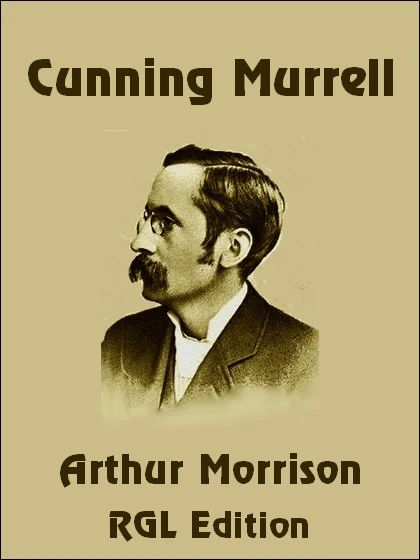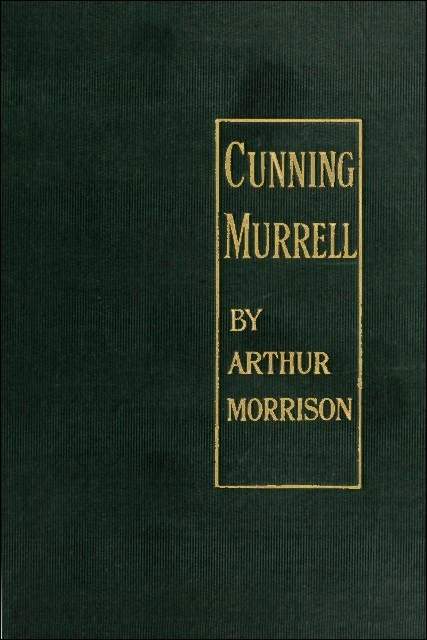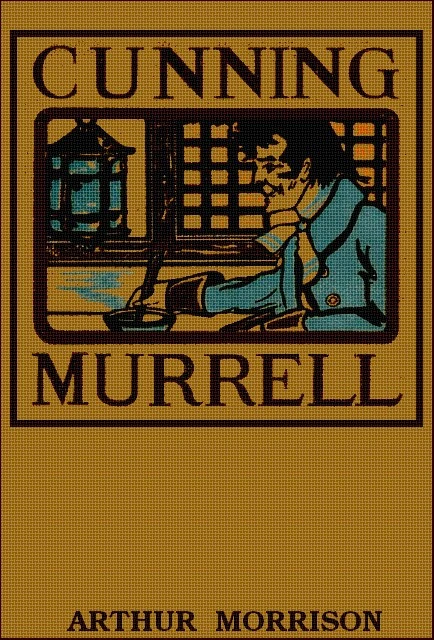Cunning Murrell

RGL e-Book Cover 2015©
First UK edition: Methuen & Co., London, 1900
First US edition: Doubleday, Page & Co., New York, 1900
This e-book edition: Roy Glashan’s Library, 2015
Produced by Colin Choat and Roy Glashan
Only the original raw text of this book is in the public domain.
All content added by RGL is proprietary and protected by copyright.

“Cunning Murrell,” Methuen & Co., London, 1900
TO JOHN LOUIS WIMBUSH
My Dear Wimbush, I think you
will not yet have forgotten our holidays in old Essex, in the days ere the
speculative builder had dreamed of Leigh, and when Hadleigh was still the
Hadleigh of another century.
It is in memory of those times that I offer you my little story, headed with
a name familiar to us both; and with the hope that it may please you to find
among my puppets images—imperfect enough—of some other old Essex
friends. For myself when some tell me, as they will, that such a man as
Murrell and such beliefs as he lived on were impossible in the time and place
I give them, I shall know that you, at least, are better informed: for indeed
you know Murrell’s doings as well as I, and you have handled the amazing (and
grimy) heap of documents that he left behind him. You can testify, too, that
a man was swum for a witch (and died of it) in this same county ten years
after the period of the tale. But there!
Yours always, A.M.
Loughton, Essex, June 1900.
INTRODUCTORY:
THE “CUNNING MAN” OF HADLEIGH
James Murrell was born the seventh son of a seventh son in
Rochford in 1780. In 1812 Murrell moved to Hadleigh, Essex and set up
business as a shoemaker. Somewhere about this time he met a witch/wizard
called Neboad from whom he learnt about the craft. His natural skill in the
art led him to give up shoe-making and become a full-time ‘cunning man.’ His
fame grew as a cunning-man of unequalled ability and he was sought out by
both local people and wealthy aristocrats from further afield. It was said
that he would always ask people if their problem was ‘high or low,’ i.e. did
they need material or magic help. Material help would involve the use of
herbal potions to combat ills. To tackle supernatural forces, Murrell would
summon good spirits or angels to fight the bad ones. He was an expert in
astrology and was consulted on a wide range of issues including finding lost
objects, clairvoyance and his ability to cast and break other witches spells.
For instance one legend refers to his using a potion to send a ‘burning
sensation’ to a gypsy woman who was believed to have cursed a girl. The
potion when heated exploded and the next day the body of the gypsy was found
burnt to death and the girl cured….
His connection with [the village of] Canewdon was also a
strong one. The villages [of Hadleigh and Canewdon] lie about sixty-two miles
from each other. It was reputed that Murrell was once engaged in a contest
with a Canewdon witch to prove who was the most powerful. Commanding her to
die, the witch immediately fell down dead. This ability to control other
witches appears in another story. According to the legend the Canewdon
villagers petitioned their vicar, Rev William Atkinson “to let Murrell
exercise his whistling powers and make the witches confess themselves by
dancing round the churchyard.” The vicar refused to give in to their demands
as he knew such an exercise would reveal his own wife to be a witch (his wife
Mary Ann and her sister, Lady Lodwick were believed by many to be part of a
coven in existence prior to 1860). Apart from emphasising the traditionally
believed link between the church and witchcraft these stories also confirmed
for many Murrell’s position as Master of Witches.
Quoted from The Haunted
Palace — History, Reviews and the Supernatural.

“Cunning Murrell,” Doubleday, Page & Co., New York,
1900
I. — NEWS AND A BOTTLE
THE sun was low in the haze that hid the hills about Tilbury
Fort, ten miles up the Hope. Here, at the Thames mouth, where there was no
more river, but salt sea, green marshes made the shore, and Canvey Island lay
broad and flat and low, like a duller, thicker water rather than land, marked
off from the shore by the Ray, pale gold in the reddening light. Deep in
coarse grasses and salt sedge, with purple thistles between, Casey Marsh lay
low and level for half a mile inland. Thence the ground rose, gently at
first, then more steeply, to the irregular green ridge that backed the
marshes far as eye could see.
Stately and grey on the boldest hill rose the ruined towers of Hadleigh
Castle, mighty still in their decay, and imposing even because of their rent
flanks and the vast thickness of wall there displayed. About their
foundations and clogged under-passages the fallen masonry was half covered
with bramble and bush, and, lower, a thicker coppice fringed the hill and
marked the foot of its steeper slope.
From the ruins the view was wide. Two miles along the marshes below,
toward the east and the open sea, stood the fishing village of Leigh, its
jumble of red roofs seeming to rest on the broad water itself, thick trees
clothing the hill behind it, and its grey church tower standing high over
all. Across the estuary, five miles away at its nearest, lay the Kent shore,
now growing misty, and the quiet, smooth water between was dotted with the
Leigh boats, like gnats on a pond.
From the lowest of the loop-holes in the castle’s boldest tower the end of
a brass telescope protruded, for there Roboshobery Dove kept his daily watch
for the sole news of the outer world that he cared for—news of the war,
in so far as it might be learned from the traffic about the Nore. For it had
been his fortune, since the Baltic fleet had been at work, more than a few
times to spy a sloop of war with a tail of captured Russian vessels, making
across the Little Nore for the Medway mouth, on the way to Sheerness hulks
and Chatham Dockyard.
The hole was far wider within than without, and among the boulders of
ragstone Roboshobery sat snugly, his unstrapped wooden leg fixed in a crack,
and so offering, with its wide socket, a convenient rest for the telescope.
He was a large man, though his size was mainly a matter of breadth. His face
was brown and round, and his broken nose gave it an undue appearance of
flatness; nor was it the handsomer for the few large pock-marks that speckled
its surface. His hair hung thick in iron-grey curls that were nearly black
from beneath the hard glazed hat, which was the commonest head-gear in the
neighbourhood alike for seamen and landsmen; and all of beard that was
unshorn was the thick roll—sometimes called “monkey-choker”—that
grew from ear to ear below his jaw. His green smock might have inclined the
observer to judge him an agriculturist, were it not contradicted by the
earrings visible among his thick curls; earrings that were a tradition and a
matter of professional equipment among mariners for the bettering of the
eyesight.
1 comment